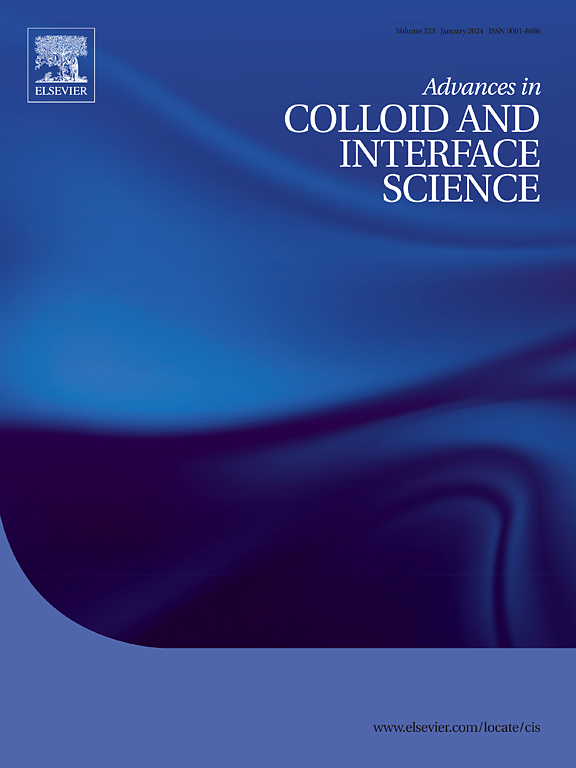Medium-chain fatty acids and monoglycerides: Nanoarchitectonics-based insights into molecular self-assembly, membrane interactions, and applications
IF 15.9
1区 化学
Q1 CHEMISTRY, PHYSICAL
引用次数: 0
Abstract
Medium-chain fatty acids (FAs) and monoglycerides (MGs) with saturated 6- to 12‑carbon long tails are single-chain lipid amphiphiles that demonstrate significant application merits. Key examples include their antimicrobial activity against antibiotic-resistant bacteria and emerging viral threats as well as innovations in oral pharmaceutics and biorenewable chemical production. These diverse functionalities are enabled by FA and MG self-assembly and their interactions with biological membranes. However, an integrated viewpoint connecting interfacial science principles to the broader application scope remains lacking. The objective of this review is to cover the latest progress in medium-chain FA and MG research and to build connections between molecular self-assembly, membrane interactions, and applications. By taking a bottom-up nanoarchitectonics perspective, we first examine molecular self-assembly principles, including ionization properties and formation of colloidal nanostructures such as micelles and vesicles. We then discuss membrane interaction concepts and experimental findings that illustrate how medium-chain FAs and MGs distinctly interact with phospholipid membranes. Based on this foundation, we highlight cutting-edge applications in medicine, agriculture, drug delivery, and sustainability, linking these advances to interfacial science concepts. In addition, we emphasize the growing convergence of experimental, theoretical, and computational approaches and offer a forward-looking perspective on future research needs and application opportunities.

中链脂肪酸和单甘油酯:基于纳米结构的分子自组装,膜相互作用和应用的见解
具有饱和6- 12碳长尾的中链脂肪酸(FAs)和单甘油酯(mg)是具有重要应用价值的单链脂质两亲性物质。关键的例子包括它们对耐抗生素细菌和新出现的病毒威胁的抗菌活性,以及在口服药物和生物可再生化学品生产方面的创新。这些不同的功能是由FA和MG自组装及其与生物膜的相互作用实现的。然而,将界面科学原理与更广泛的应用范围联系起来的综合观点仍然缺乏。本文综述了中链FA和MG的最新研究进展,并探讨了分子自组装、膜相互作用及其应用之间的联系。通过自下而上的纳米建筑学视角,我们首先研究了分子自组装原理,包括电离特性和胶束和囊泡等胶体纳米结构的形成。然后,我们讨论了膜相互作用的概念和实验结果,说明了中链FAs和mg如何明显地与磷脂膜相互作用。在此基础上,我们重点介绍了在医学、农业、药物输送和可持续性方面的前沿应用,并将这些进展与界面科学概念联系起来。此外,我们强调实验、理论和计算方法的日益融合,并对未来的研究需求和应用机会提供前瞻性的观点。
本文章由计算机程序翻译,如有差异,请以英文原文为准。
求助全文
约1分钟内获得全文
求助全文
来源期刊
CiteScore
28.50
自引率
2.60%
发文量
175
审稿时长
31 days
期刊介绍:
"Advances in Colloid and Interface Science" is an international journal that focuses on experimental and theoretical developments in interfacial and colloidal phenomena. The journal covers a wide range of disciplines including biology, chemistry, physics, and technology.
The journal accepts review articles on any topic within the scope of colloid and interface science. These articles should provide an in-depth analysis of the subject matter, offering a critical review of the current state of the field. The author's informed opinion on the topic should also be included. The manuscript should compare and contrast ideas found in the reviewed literature and address the limitations of these ideas.
Typically, the articles published in this journal are written by recognized experts in the field.

 求助内容:
求助内容: 应助结果提醒方式:
应助结果提醒方式:


